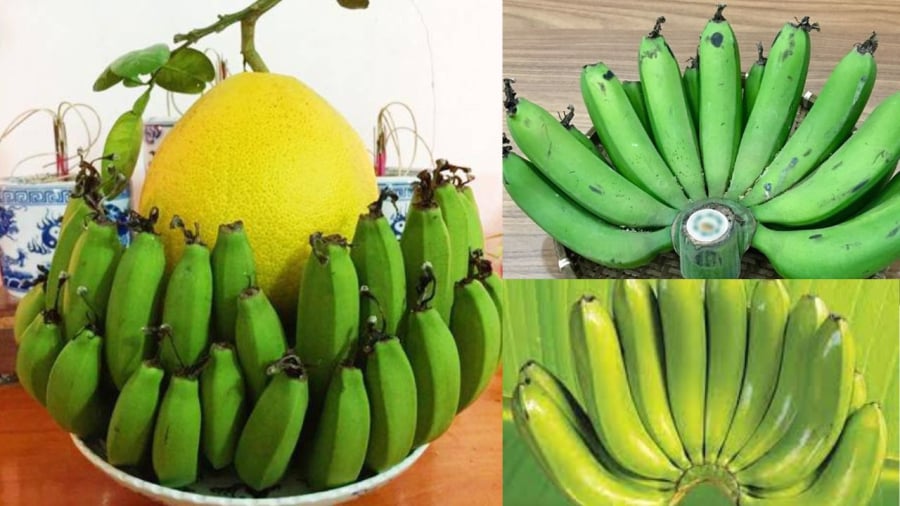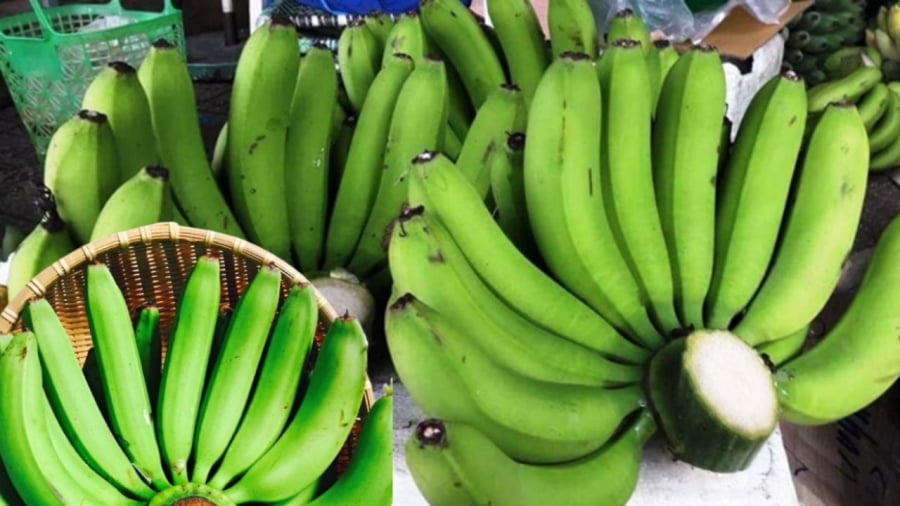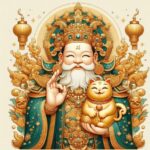Why Avoid Placing Two Bunches of Bananas Together?
Vietnamese people follow the concept of yin and yang, using even and odd numbers for spiritual rituals. Odd numbers represent yang, while even numbers represent yin. Odd numbers signify growth, good luck, and prosperity. Therefore, when arranging offerings, people often use odd numbers, such as three or five flowers in a vase, instead of even numbers.
The same principle applies to fruits, where people offer three, five, seven, or nine fruits, avoiding even numbers. Bananas, however, are offered in bunches as they are not separated into individual fruits for incense burning. Thus, it is preferable to have an odd number of bananas in a bunch.
Placing two or three bunches of bananas together on an altar is considered inauspicious and unaesthetic. It is also impractical as it may cause the bananas to fall and break, bringing bad luck. Instead, people usually place a single bunch of bananas on a plate, with other fruits placed on top of the bananas if desired.

Bananas: A Popular Fruit for Incense Burning
Stacking two bunches of bananas or combining them into one large bunch is not recommended and is considered inappropriate in the cultural context of spiritual worship. In many families’ spiritual beliefs, bananas symbolize good luck. The curved shape of the bananas resembles a protective hand, embracing the other fruits in the tray of five types of fruits. On the ancestral altar during Tet, bananas stand out and are considered the central offering.
Stacking two bunches of bananas or combining them into one large bunch is not harmonious with feng shui principles. In spiritual feng shui, odd numbers are used when arranging offerings, as they represent yang and growth. Combining two bunches of bananas in a tray of five types of fruits creates an even number, which symbolizes yin, stagnation, and bad luck.
The bulky structure of banana bunches makes stacking them untidy and prone to falling. Placing two bunches side by side is unstable, and securing them with glue, nails, or strings is inconvenient and may be considered disrespectful. Using sharp metal objects like nails on the ancestral altar is considered a major taboo, while using glue or strings may be seen as untidy and insecure.

Avoid Combining Bunches of Bananas for Incense Burning
Things to Note When Choosing Bananas for Incense Burning
For incense burning, use unripe green bananas instead of ripe ones: Green bananas create a harmonious color combination with other fruits, making the offering more aesthetically pleasing. Moreover, green bananas are firmer and less likely to break or fall, ensuring the offering remains intact.
Avoid choosing bunches with an even number of bananas: While many people focus on selecting bananas with attractive fruit, it is essential to consider the spiritual significance of the number of bananas in a bunch. Odd-numbered bunches are believed to bring better luck than even-numbered ones.
Avoid choosing crooked or unbalanced bunches: A crooked or unbalanced bunch of bananas is not only aesthetically unpleasing but also considered inauspicious from a feng shui perspective. Therefore, during the Tet holiday, homeowners put extra effort into selecting the perfect bananas for their ancestral altars.
Preserve the “beard” of the bananas: The “beard” of a banana bunch is believed to symbolize wealth and prosperity. When cleaning the bananas, ensure you retain this feature, and when purchasing, choose bananas with intact “beards.”
Not all types of bananas are suitable for incense burning: In Northern Vietnam, the preferred banana for incense burning is the dwarf banana (chuối tiêu) due to its long, curved shape, which beautifully complements the other fruits. In contrast, Western bananas are shorter and straighter and are not used. However, in Hue, dwarf bananas are considered taboo, and people choose different varieties such as chuối sứ, chuối ngự, or chuối mốc.
This information is for reference and spiritual contemplation only.






































